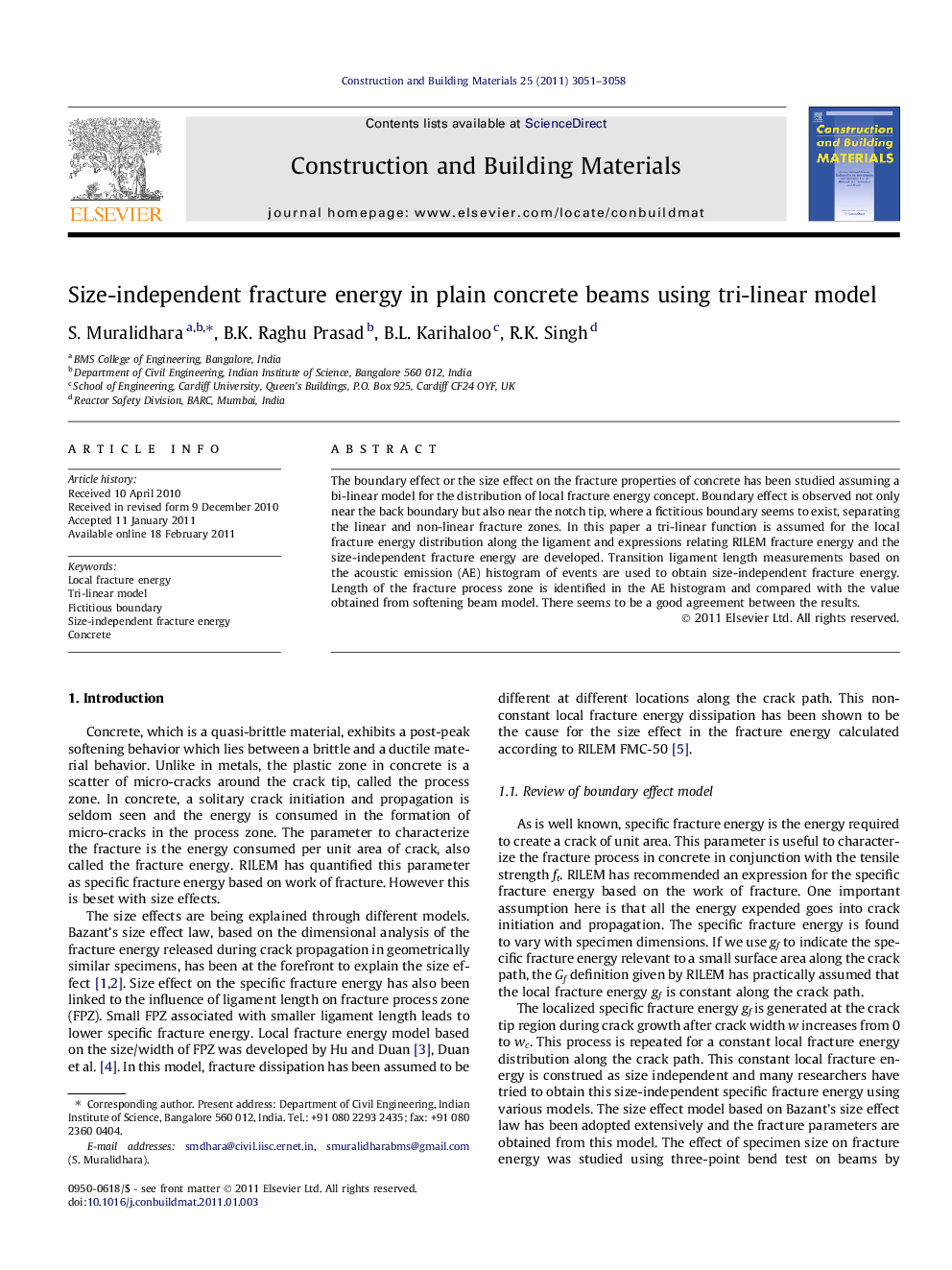| Article ID | Journal | Published Year | Pages | File Type |
|---|---|---|---|---|
| 259237 | Construction and Building Materials | 2011 | 8 Pages |
The boundary effect or the size effect on the fracture properties of concrete has been studied assuming a bi-linear model for the distribution of local fracture energy concept. Boundary effect is observed not only near the back boundary but also near the notch tip, where a fictitious boundary seems to exist, separating the linear and non-linear fracture zones. In this paper a tri-linear function is assumed for the local fracture energy distribution along the ligament and expressions relating RILEM fracture energy and the size-independent fracture energy are developed. Transition ligament length measurements based on the acoustic emission (AE) histogram of events are used to obtain size-independent fracture energy. Length of the fracture process zone is identified in the AE histogram and compared with the value obtained from softening beam model. There seems to be a good agreement between the results.
Research highlights► The present study is aimed to obtain size independent fracture energy and the length of the fracture process zone in concrete, using acoustic emission technique. ► The bi-linear boundary effect model using AE data has already been used to estimate the size independent fracture energy in concrete. ► The tri-linear model based on the observations made in the acoustic emission data in front of the notch, on a plain concrete beam tested under three point bend condition to estimate size independent fracture energy. ► The tri-linear model appears to showcase a more accurate energy distribution along the ligament length and facilitates a better estimate of size independent fracture energy. ► From this model, the fracture process zone length is estimated using event histogram from AE data.
